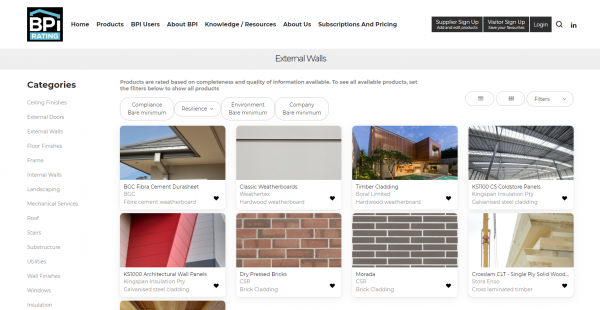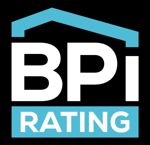All together now: BPI rating puts it all in the one place
The BPI rating tool is designed to fill a need for designers, developers and architects in the building industry. Sean Carroll finds out how the new product rating system works.
Edge Environment, with help from the Insurance Council of Australia and Comply Flow among others, has created the Building Product Information (BPI) rating tool, a catch-all and one-stop-shop for building professionals.

The BPI rating provides transparency for builders who are looking for the best products to use in multiple categories. Transparency could’ve been helpful amidst the flammable cladding crisis across the country, an issue which the construction union estimates could cost more than $6.2 billion to fix.
The BPI tool lets users log into the website for free and assess a range of 16 product categories over four criteria and decide what’s best for their specific build.
“It’s an online database with building products and we put it together to essentially make it easier for building professionals to find and compare building products,” Edge Environment managing director and BPI co-founder Jonas Bengtsson says.
“It’s very time consuming, quite confusing and difficult to gather the information you need to make informed decisions about the compliance, resilience and sustainability from responsible suppliers.”
Manufacturers and distributors can list their products on the rating tool website free of charge where a team of industry experts, using the information provided to them, rates the products out of five in four categories: compliance, resilience, environment and company.
The compliance rating is all about how well it aligns with construction codes, fire rating, structural integrity and energy efficiency among others.
“What we’re looking for here is essentially if the product has been certified, tested or if the manufacturer provides any information that’s useful in terms of compliance with the code,” Jonas says.
Resilience is a category funded by the Insurance Council of Australia that’s pertinent to its interests. It’s based off how resilient products are when it comes to extreme weather conditions, situations that would require an insurance claim like cyclones or floods.

“Right now, the resilience aspect of the tool is quite sparse in terms of information but that’s reflective of the information and testing available. We want to raise the awareness of this factor and potentially drive the market to develop more information, Standards and tests to demonstrate their effectiveness in this category,” Jonas explains.
This is beneficial to all parties involved here. By encouraging product manufacturers to prove that its products are strong enough in extreme weather conditions, they will be rewarded with a higher BPI rating while insurers would hopefully see a decrease in the number of insurance claims.
But most importantly, look more attractive to the customer.
Sustainability is a factor that Edge Environment, being a sustainability consulting agency, has a clear understanding of.
“It ranges from the labour conditions, energy needed to produce the product, how healthy is it long-term, the product’s carbon footprint, recycle-ability, amount of recycled content used, does it have any harsh or illicit chemicals and how does it relate to the green rating tool in the market,” Jonas says.
And the final section is company which rates the actual provider out of five, not its products. How it complies with work safety regulations, environment management, reporting of incidents, action on climate change and more.
How the team of experts rate the products is what Jonas refers to as his team’s “secret sauce”, a bit like Colonel Sanders from KFC but more important.
“It’s essentially a professional opinion, based on our determination of what is best practice” he says.
“It’s about making it simpler. People just want to know and be told if we think it’s a good product depending on the information available. It also lets the users compare the information we’ve provided to them.
Jonas explains how architects and building professionals want to do the right thing, they want to use the most environmentally sustainable and friendly products. The problem Jonas and his team came across in their travels was that it just takes too long to scour all available sources. Projects teams can spend over 1,000 hours for one project alone to gather and compile product information.
It’s the sustainability category that somewhat drove Edge Environment to develop this tool. He went out to the market and tried to get manufacturers and architects to produce environmental credentials but found most people he spoke to weren’t interested.
“The problem isn’t to create new information; it’s about pulling the information together and interpreting it,” he says.
From there, Edge Environment and others decided it was in the best interest of the industry to collate all this product information into the one place.
As an independent company, it was best positioned to create the tool. They had no conflict of interest that a government body or industry manufacturer may have if they had created it.
“The whole platform is based off going in and finding information you can trust. You don’t have to jump around on all these different sites and rely on sales reps, brochures and so on,” Jonas explains.
“It was a change for us as we’re an advisory service company, so this became a bit of a technology venture for us and it has been really exciting. We essentially want to fill that gap that everyone was telling us existed.”
Manufactures and providers can list products on the website free of charge to get rated by the BPI rating team.
Edge Environment
www.edgeenvironment.com
